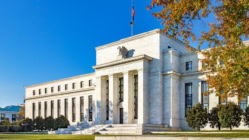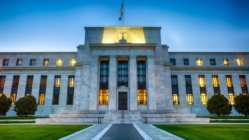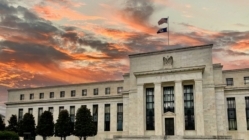
Mortgage Rates Top 6% for the First Time Since the 2008 Financial Crisis
The above is a WSJ headline for this article. Rates are also back to where they were … way back in June and somehow we survived July and August 😊
Rates shot up this week in response to higher than expected inflation numbers and Fed comments about being much more aggressive than expected with their efforts to tame inflation.
Fed Pivot Not Coming Soon
Rates were dropping and stocks were surging upwards after June largely because most of the investment community seemed to be expecting the Fed to pivot in response to bad economic news.
A Fed Pivot refers to the Fed either stopping its Fed Funds rate increases, actually lowering the Fed Funds rate, stopping its “Quantitative Tightening” (where they sell Treasuries and Mortgage-Backed Securities or MBS), and even starting Quantitative Easing (where the buy Treasuries and MBS).
Here is a great article explaining what a pivot is in much more detail.
The reason the markets respond so positively to the potential of a pivot is because the Fed action can drive markets (particularly stocks) so much.
Much of our surge in asset prices since COVID hit has been driven entirely by Fed policy (artificially low rates and Quantitative Easing).
Fed Is Hell-Bent on Stopping Inflation – By Killing Demand
In this EXCELLENT two-part series on the Wealthion Podcast, famous macro author and pundit, Jim Rickards explains exactly what is going on and when the Fed might “pivot.”
What I really love about the interviews is that he corroborates everything that Jeff Snider (the other macro pundit I cite repeatedly) has been saying almost to the letter.
He points out, among other things, that (1) the Fed always acts too late; (2) that the Fed will NOT pivot until well into 2023, if that soon; (3) that the Fed is not all powerful like everyone thinks; (4) that money is created by banks lending money and NOT by the Fed “printing;” and (5) that inflation is largely a problem of broken supply chains and too little supply overall. Because the Fed can’t increase supply to stem inflation, all it can do is absolutely destroy demand by continually raising rates until they do tremendous damage.
Do We Need a Pivot to Bring Rates Down?
We don’t need to see a full pivot for rates to come down. This is because long-term rates often fall independent of Fed action – if there is severely negative economic news, crises overseas (such as wars, sovereign debt problems, or serve energy shortages), or a crashing stock market.
So, it is the stock market that needs the pivot much more than the bond market at this point, as bond prices can rise (or rates can fall) irrespective of Fed action when the economy is weak enough.
And – Barry Habib still seems to think that we will see rates fall in late Q4 or early Q1 in response to decreasing inflation numbers and very weak economic news – and I tend to agree because there is so much weakness across all of the world’s major economies.
5 Million Homes = Huge Market Still
Here is my last reminder amongst all this gloom and doom 😊
This chart reminds us that there will still be over 5 million homes purchased this year – a larger number than what we saw in 2018 and 2019!
And – even in the slowest of years like in 2008 – 2011, we still saw over 4 million homes purchased.
Even in 1982, when we were in a horrible recession, when rates were double digits, and when our population was much smaller – almost 2 million homes were sold.
So – no matter what happens, there is always a ton of business to be had!
Jay Voorhees
Founder | JVM Lending
(855) 855-4491 | DRE# 1197176, NMLS# 310167
























